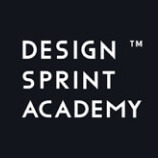A design sprint retrospective is a team meeting focused on improving the design sprint experience and the sprint results.
The design sprint retro (short for retrospective) occurs at the end of each Design Sprint and enables the team to reflect on their sprint experience and share their honest feedback on what went well, what were some challenges, and what should be done better next time.
With our Design Sprint Retrogram Template, facilitators can efficiently highlight opportunities for change and generate meaningful improvements on areas like:
Remote Design Sprint format and schedule (offline vs. online sessions, number of sprint days, daily plan, the team size and structure);
Team collaboration (communication, decision-making, team alignment, engagement, inclusivity, accountability, trust, psychological safety);
Design Sprint Results (the long-term goal, sprint questions, solution sketches, prototype, user testing).
Any Design Sprint Facilitator can use our template to wrap up their design sprints and optimize their next one.
Here's how the 1-hour workshop is structured:
Welcome & congratulate the team for their achievements
Short warm-up
Quick overview of the Design Sprint week
Design Sprint Retrogram overview
Three-step reflection: Highs, Lows, Whishes
Facilitation Notes: If this is your first time doing a design sprint retrospective, we've also included facilitation notes to help you navigate the board. We recommend deleting them before starting the actual workshop.






